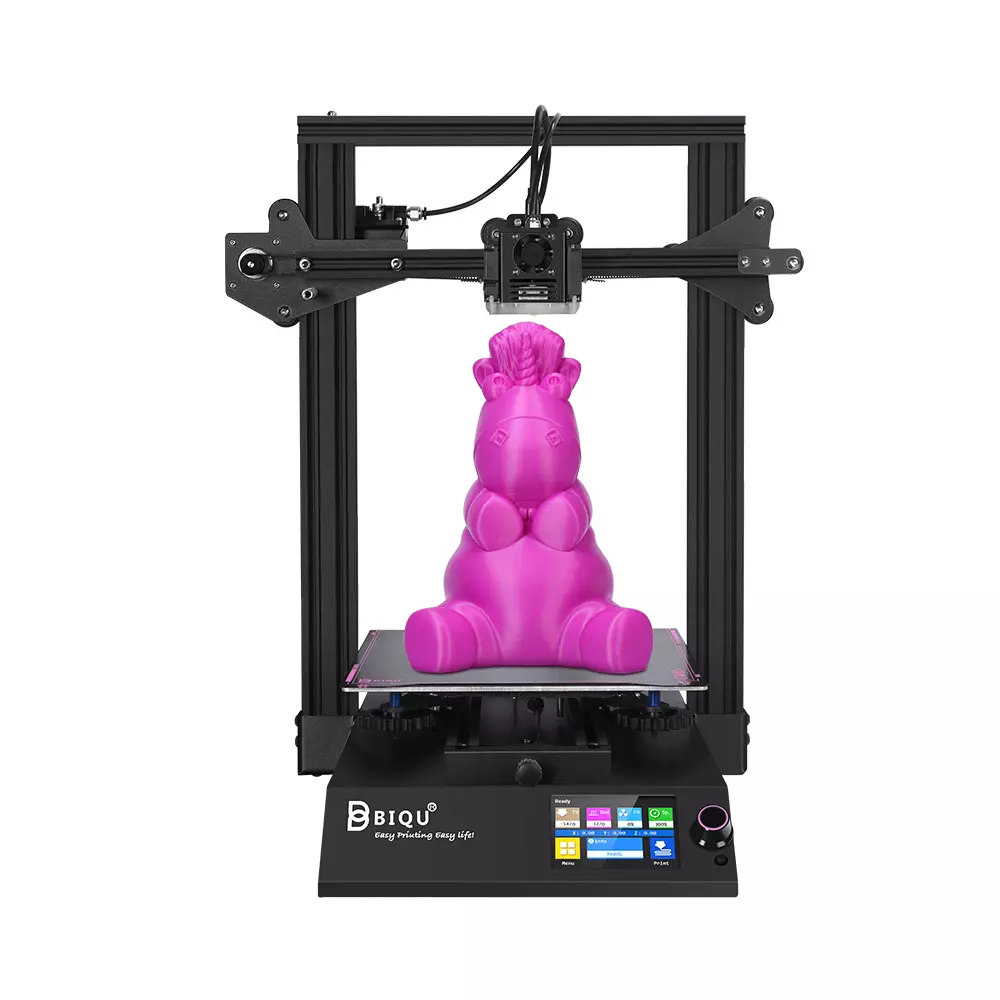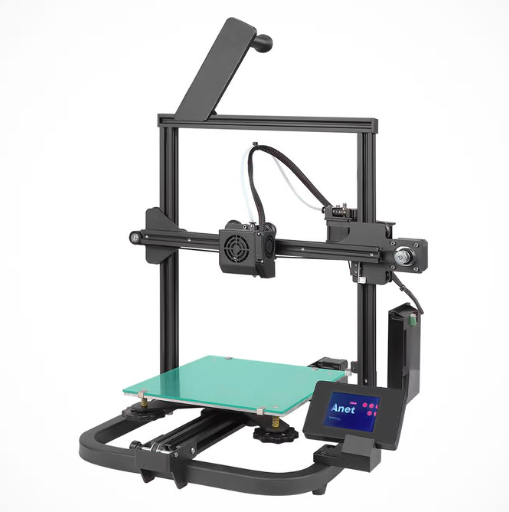Compare BIQU B1 vs A8 V2
Comparison between the best 3D printers
Choose the best 3D printer at the best price. The cheapest 3D printers are here.
Buy a 3D printer here with 3D Fila.
 |
 |
|
| Model | BIQU B1 |
A8 V2 |
| Printing Material | Filament | Filament |
| Buy Filament for BigTreeTech BIQU B1 | Buy Filament forAnet A8 V2 | |
| Estimated price | $269,00 | $129,00 |
| Manufacturer | BigTreeTech | Anet |
| Release Year | 2020 | 2021 |
| Print Volume [mm] | 235x235x270 | 220x220x250 |
| Printer Size [mm] | 412x402x492 | 428x441x486 |
| Weight [kg] | 8,00 | 6,2 |
| Power Loss Recovery | YES | NO |
| Enclosed printer | NO | NO |
| Bed Leveling | Manual | Manual |
| Filament End Sensor | YES | NO |
| Bed type | Heated | |
| Power supply system | Bowden | Bowden |
| Standard nozzle | 0,4 | 0,4 |
| Maximum Nozzle Temperature [°C] | 250 | 230 |
| Maximum Bed Temperature [°C] | 100 | |
| Maximum printing speed [mm/s] | 100 | 150 |
| Filament holder | YES | YES |
| Camera for supervision | NO | NO |
| Recommended filaments | PLA, TPU, ABS, PETG | PLA |
| Recommended slicers | Cura, Simplify, Slic3r | Cura, Simplify, Slic3r, IdeaMaker |
| Maximum Resolution [mm] | 0,1 | 0,1 |
| Processor | 32 Bits BTT SKR V 1.4 | |
| Display | Touchscreen TFT 3,5'' | Display touchscreen 2,8'' |
| Power Supply | 24V / 360W | 110/220V / 250W |
| Connectivity | SD / USB | SD / USB |
| Operating systems | Windows, Mac, Linux | Windows, Mac, Linux |
| Date of registration in the system | 2021-04-14 | 2022-11-10 |
| Release date | 2020 | 2021 |
| Extra features | The BIQU B1 is an advanced 3D printer with a silent 32-bit BTT SKR V1.4 motherboard and ARM Cortex-M3 CPU, offering DIY interfaces (I2C, SPI, WiFi) and dual Z-axis. Its dual BTT B1 TFT35 V3.0 operating system allows real-time monitoring and multiple printing modes, including G-code visualization effects. It stands out for its BIQU SSS (Super Spring Steel), ensuring easy model adhesion and simplified removal, with the possibility of using it on both sides. It includes a filament sensor, automatically pausing printing in case of filament breakage. The multicolored RGB lights integrated into the hotend allow you to view the printing status even at night. Additional notes include the need for a BIQU-specific Type-C cable and extra interfaces for smart filament sensor and BL Touch. | The Anet A8 V2 is a Cartesian-XZ type 3D printer with a build volume of 220 x 220 x 250 mm, Ender 3 design and V-slot assembly. It has a 32-bit motherboard and touchscreen interface, promising ease of use. It uses open source firmware and has thermal failure protection. It stands out for its cable organization and the absence of a heated bed, focusing on energy savings and PLA printing. It comes with an external power adapter, aiming at greater safety, especially for beginners and educational use. |
| Support for multiple colors and materials (AMS and CFS) | NO | NO |
Notes * |
||
| Cost-benefit | 7 / 10 | 6 / 10 |
| Hardware | 2 / 10 | 0.6 / 10 |
| Tela | . | . |
| Print volume | 3 / 10 | 3 / 10 |
| Performance | 1 / 10 | 1 / 10 |
Conclusion |
| In comparing the BIQU B1 and the Anet A8 V2 3D printers, it's evident that each model caters to different user needs and preferences while offering a unique set of features at varying price points. The BIQU B1, with its more advanced technology, including a silent 32-bit motherboard, larger print volume, and enhanced capabilities like power loss recovery and a filament sensor, positions itself as a superior option for those seeking a reliable and efficient 3D printing experience. It supports a wider range of filaments and provides increased user convenience with its dual Z-axis and RGB print status lights, making it suitable for hobbyists and professionals alike. On the other hand, the Anet A8 V2, while more budget-friendly and relatively straightforward, has limitations in terms of print volume, lack of advanced features, and a simpler design intention focused primarily on PLA printing. It may appeal more to beginners or those prioritizing cost over capability. Ultimately, when considering the overall value, the BIQU B1 presents a more compelling choice due to its advanced features and higher versatility despite the higher price. However, for cost-conscious users who require basic functionality, the Anet A8 V2 remains a viable option. The decision should be based on the user's specific needs, budget, and intended projects. |

